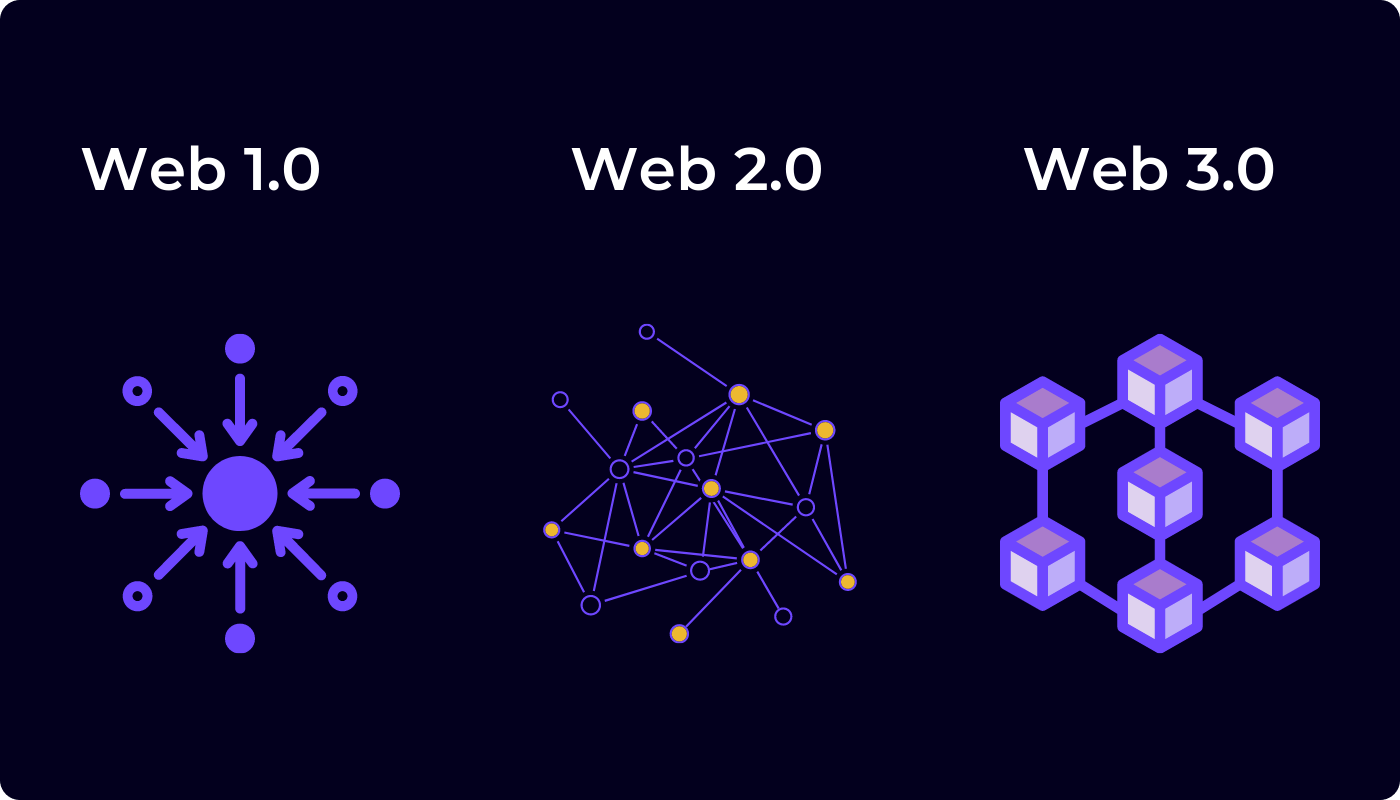Evolution of Web
The web has evolved a lot over the years, and the applications of it today are almost unrecognizable from its most early days. The evolution of the web is often partitioned into three separate stages: Web 1.0, Web 2.0, and Web 3.0. Web 1.0 was one which had contained the static webpages for the user in which user can only see the relative information on webpages and cannot interact with it. Web 2.0 brought the change by making webpages user interactive with the concept of dynamic paging. Now , Web has evolved a lot and is at the position to get into Web 3.0 which is the decentralized network with Blockchain.
What is Web 3.0
There are a few fundamental differences between web2 and web3, but decentralization is at its core.
Web3 enhances the internet as we know it today with a few other added characteristics. web3 is:
Verifiable Trustless Self-governing Permissionless Distributed and robust
Web3 applications either run on blockchains, decentralized networks of many peer to peer nodes (servers), or a combination of the two that forms a cryptoeconomic protocol. These apps are often referred to as dapps (decentralized apps), and you will see that term used often in the web3 space.
When you hear about web3, you'll notice that cryptocurrency is often part of the conversation. This is because cryptocurrency plays a big role in many of these protocols. It provides a financial incentive (tokens) for anyone who wants to participate in creating, governing, contributing to, or improving one of the projects themselves.

Why do we need Web3?
- Ownership
- Identity
- Native payments
Let us understand these terms in brief.
Web3 gives you ownership of your digital assets in an unprecedented way. For example, say you're playing a web2 game. If you purchase an in-game item, it is tied directly to your account. If the game creators delete your account, you will lose these items. Or, if you stop playing the game, you lose the value you invested into your in-game items.
Web3 allows for direct ownership through non-fungible tokens (NFTs). No one, not even the game's creators, has the power to take away your ownership. And, if you stop playing, you can sell or trade your in-game items on open markets and recoup their value.
Identity - Traditionally, you would create an account for every platform you use. For example, you might have a Twitter account, a YouTube account, and a Reddit account. Want to change your display name or profile picture? You have to do it across every account. You can use social sign-ins in some cases, but this presents a familiar problem—censorship. In a single click, these platforms can lock you out of your entire online life. Even worse, many platforms require you to trust them with personally identifiable information to create an account.
Web3 solves these problems by allowing you to control your digital identity with an Ethereum address and ENS profile. Using an Ethereum address provides a single login across platforms that is secure, censorship-resistant, and anonymous.
Native payments - Web2's payment infrastructure relies on banks and payment processors, excluding people without bank accounts or those who happen to live within the borders of the wrong country. Web3 uses tokens like ETH to send money directly in the browser and requires no trusted third party.
A decentralized future
Web3 is a young and evolving ecosystem. Gavin Wood coined the term in 2014, but many of these ideas have only recently become a reality. In the last year alone, there has been a considerable surge in the interest in cryptocurrency, improvements to layer 2 scaling solutions, massive experiments with new forms of governance, and revolutions in digital identity.
We are only at the beginning of creating a better Web with Web3, but as we continue to improve the infrastructure that will support it, the future of the Web looks bright.

